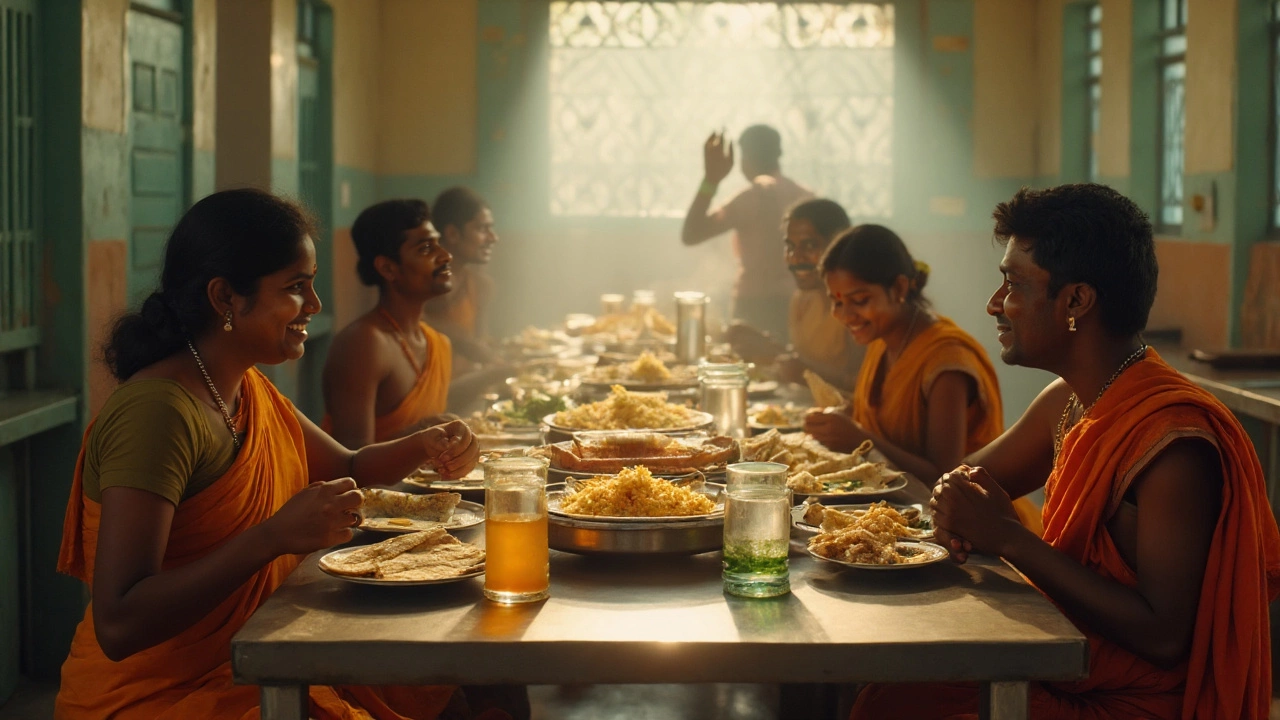SEARCH
Tamil Nadu Dosa – Everything You Need to Know
Ever wondered why a dosa from Tamil Nadu tastes so crisp, yet stays soft in the middle? You’re not alone. This simple rice‑and‑lentil crepe has been a breakfast hero across South India, but the Tamil style has a few tricks that set it apart. In this guide we’ll walk you through the story, the basics of a good batter, and how to nail that perfect bite at home.
What Makes Tamil Nadu Dosa Special?
First off, the batter. Tamil cooks usually soak a mix of white rice and urad dal (black gram) in a 3:1 ratio, then grind it to a fine paste. The secret is letting it ferment overnight in a warm spot. This natural fermentation creates tiny air bubbles, which give the dosa its signature lightness. Some chefs add a pinch of fenugreek seeds for extra flavor and faster fermentation.
Another hallmark is the cooking surface. Traditional Tamil kitchens use a cast‑iron tawa (griddle) that’s been seasoned with oil over many uses. The seasoned surface creates a non‑stick layer that helps the batter spread thinly and turn golden fast. If you use a non‑stick pan, you’ll get a softer dosa, but the crisp edge you love comes from that well‑seasoned iron.
Finally, the toppings. While plain dosa is a staple, many Tamil families love a thin layer of butter or ghee right after the dosa comes off the heat. It adds shine and a buttery aroma that makes the dish unforgettable.
How to Make the Perfect Tamil Nadu Dosa
Ready to try it yourself? Here’s a step‑by‑step guide that works even if you’re a beginner.
1. Soak the grains – Rinse 1 cup of rice and ¼ cup of urad dal. Soak them separately for at least 4 hours, preferably overnight.
2. Grind the batter – Drain the water, then blend the rice and dal together with a little fresh water until you get a smooth, slightly thick paste. The consistency should be like a thin pancake batter.
3. Ferment – Transfer the batter to a large bowl, cover it with a cloth, and leave it in a warm spot for 8–12 hours. You’ll see it rise and develop a mild sour smell.
4. Season – Add a pinch of salt and, if you like, ½ tsp of fenugreek seeds. Stir gently; over‑mixing can break the air bubbles.
5. Heat the tawa – Place a cast‑iron or heavy‑bottomed skillet on medium heat. Sprinkle a few drops of oil; when they sizzle, the pan is ready.
6. Spread the batter – Pour a ladleful of batter onto the center, then quickly swirl the skillet to spread it thinly in a circular motion. The thinner the batter, the crispier the dosa.
7. Cook – Drizzle a few drops of oil or ghee around the edges. Let it cook for 1–2 minutes, or until the surface is golden and the edges lift easily.
8. Serve – Fold the dosa in half or roll it, add a dollop of butter if you wish, and serve hot with coconut chutney, sambar, or a simple tomato relish.
That’s it! With a bit of practice you’ll get that perfect balance of crunch and softness that Tamil Nadu diners rave about.
Beyond the classic plain dosa, Tamil Nadu also offers variations like Rava Dosa (made with semolina), Masala Dosa filled with spiced potatoes, and Chettinad Dosa spiced with fiery pepper blends. Each version keeps the core batter technique but adds local flavors that reflect the state’s diverse culinary heritage.
If you ever travel to Tamil Nadu, try dosas at local eateries in Chennai, Madurai, or Coimbatore. Street stalls often serve them with fresh coconut chutney and a steaming bowl of sambar, giving you a true taste of the region.
Enjoy experimenting with the batter, and soon you’ll be serving up restaurant‑quality Tamil Nadu dosas right from your kitchen.

Which South Indian State Has the Best Food? 2025 Guide for Travelers & Foodies
Wondering which South Indian state has the best food? Get a clear winner, trade-offs, must-try dishes, smart routes, costs, and hygiene tips-all in one practical guide.
Continue reading